Big Fish For Big Fish Tanks
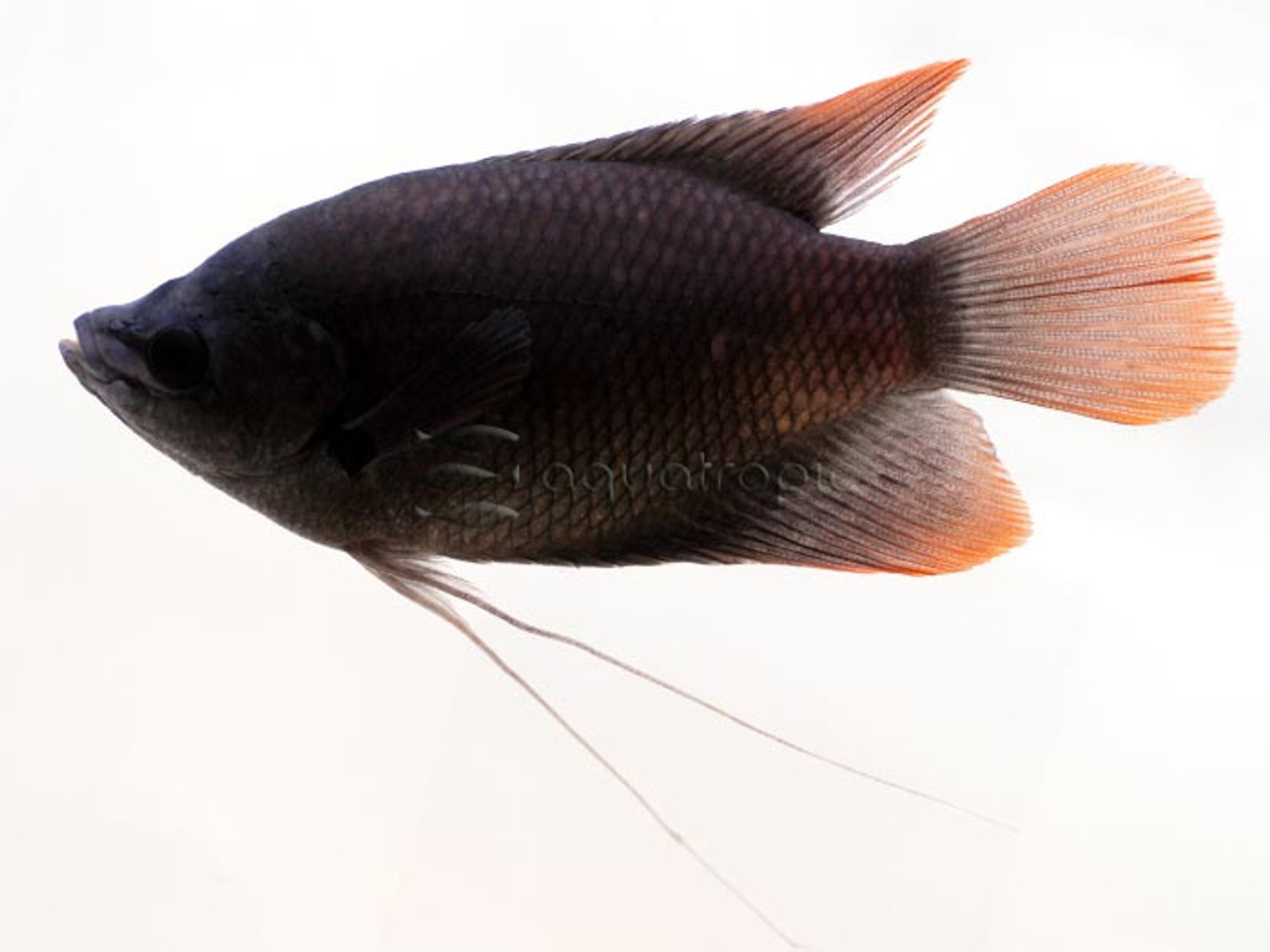
The average home aquarium is pretty small, usually not more than 30-50 gallons, if not smaller still, making them suitable only for those species that won’t outgrow such tight confines. But there’s an unfortunate notion among many novice aquarists that fish will only grow to the size of their surroundings. The logic goes that if you take a species that normally gets large—say, a Redtail Catfish—and place it in a small container, it will stunt its growth permanently. Puttings aside the ethical questions this entails, it should be obvious that there is no truth to this.
There are all kinds of variables which will determine the potential size an individual fish will grow to. Obviously, the species involved is of most importance, but oftentimes so is the sex of the individual. In many territorial cichlids, it is the aggressive males which get largest, while in most tetras and livebearers the opposite is true. For instance, a female guppy (Poecilia reticulata) can easily grow to twice the size of males.
Age has to be taken into account as well. Many freshwater fishes can live for decades, and it can take many years before their maximum size is reached. You’ll often see a disparity between the reported maximum length of a fish and the average size of aquarium specimens, and this is one reason why. It simply takes a long time for many species to reach their full potential.
However, genetics also has a role to play in this, as does a fish’s diet. Some individuals in a species are naturally predisposed to grow larger than their peers. For proof of this, just look at the range in our own species. Of course, the amount of food offered to a fish will play a hugely important role in the ultimate size attained. It is quite possible to dramatically limit the physical dimensions of any fish simply by reducing the nutrition it is provided, though certainly one should never do so to the detriment of their health. Conversely, it is all too common for aquarists to overfeed, resulting in genuinely obese and unhealthy specimens. Finding that Goldilocks medium can be a challenge, especially when there is a diverse group of species present which have to be fed together. Feed too little, and not everyone gets a full stomach, feed too much, and the most gluttonous in the tank will end up sickly and water quality will suffer.
All this being said, sometimes a fish is simply going to grow too large for the average home aquarium. It’s up to you, dear fishkeeper, to do your homework and only choose those species which can be expected to lead a long and happy life within the confines you can provide for it. We offer a vast option of species, and the ones featured in this article are really only for the biggest of fish tanks… those which measure in the hundreds of gallons.
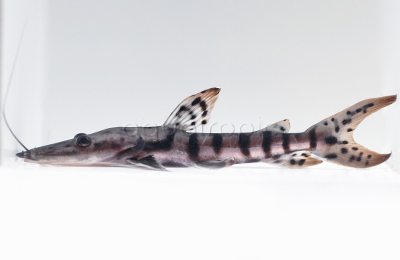
Tiger Shovelnose Catfish (Pseudoplatystoma fasciatum)
Catfishes are a diverse order in every sense of the word. There are, of course, many thousands of species scattered across the globe, and they run the gamut from bottomfeeding scavengers to wood raspers to algae grazers to highly predatory piscivores. And, as for size, there is no other group of fishes which can compare, from the tiniest of Otos and Corys to absolute monsters like the Wels Catfish of Europe, capable of reaching over 600 lbs! Somewhere in the middle of this lies the Tiger Shovelnose Catfish from South America. You’ll see the gorgeous juveniles of this species available often enough in aquarium stores, and their exotic looks make them a very tempting purchase, but, when fully grown, this fish can reach upwards of three feet in length! And you’ll be surprised to discover just how quickly it can get to this size. A small six-inch juvenile can easily double in size every 6-12 months, depending on heavily it is fed.
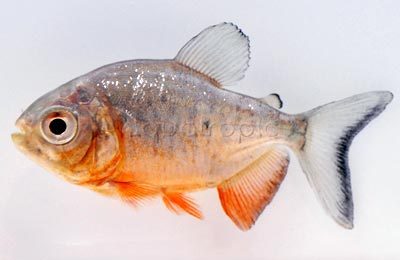
Red-bellied Pacu (Piaractus brachypomus)
Many aquarists find the idea of keeping Red-bellied Piranha enticing, but there are a number of reasons why that species may not be practical. But there is an alternative which offers a virtually identical appearance, the Red-bellied Pacu. Unlike their famously ferocious cousins, pacu are omnivores with blunt teeth designed for crushing the fruits and nuts which rain down upon the Amazonian waters they call home. But there is one enormous downside to keeping them in a home aquarium… fully grown, this species can tip the scales at over 50 lbs and grow to more than two feet in length. Nearly every public aquarium has a number of these swimming their biggest Amazonian display tanks, and these can usually be traced back to well-meaning home aquarists who bought a pet that they couldn’t care for in maturity. Pacu are largely farmed as food fish in South America, and those juveniles which make their way into the aquarium trade are really most suitable for those with heated ponds.
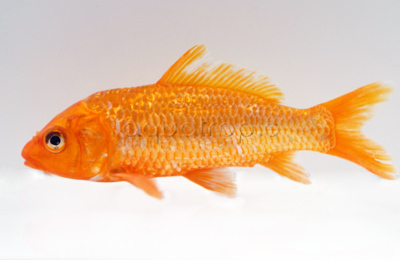
Koi (Cyprinus carpio)
Goldfish (Carassius auratus) are frequently the point of entry into the fishkeeping hobby for many young aquarists, and they could easily earn a spot in this list. While there are many unusual varieties which grow to reasonable proportions—Orandas, Ryukins, Lionheads—the more natural elongated forms, often won at carnivals or purchased inexpensively as feeder fishes, can easily grow to over a foot in length and live for thirty years or more. Koi are similar in many way, being peaceful herbivorous relatives that appear quite similar at first glance, and you’ll often find the two mixed together in ponds. There is a big difference though, as Koi are capable of growing to gigantic proportions. The largest recorded specimen is said to have weighed more than 90 lbs and clocked in at just over four feet long… imagine the waste this beast would produce in even the largest of aquariums!
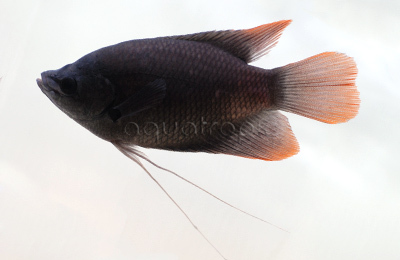
Giant Red Tail Gourami (Osphronemus laticlavius)
Gouramis are wonderful fishes for the average community aquarium. There are tiny, peaceful species, like the adorable Sparkling Gourami (Trichopsis pumila), which barely grow over an inch. There are the aptly named Dwarf Gouramis in the genus Trichogaster, which stay under four inches. And for something a bit more impressive, there are species like the Blue Gourami (Trichopodus trichopterus) and Moonlight Gourami (Trichopodus microlepis), which get closer to six inches, and, a relative giant, the Snakeskin Gourami (Trichopodus pectoralis), which can be double this when mature. But their is one genus that needs to come with a warning label, the Giant Gouramis. There are four species of Osphronemus, and the smallest among them still reaches an impressive foot and a half when fully grown. They are, thankfully, quite gentle and lugubrious creatures, making them suitable for those who have aquariums substantial enough to accomodate a fish of this girth.
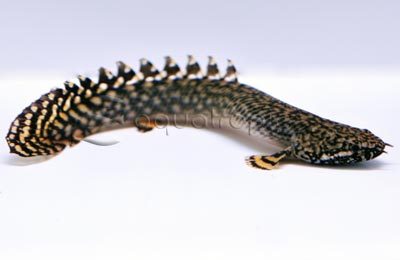
Ornate Bichir (Polypterus ornatipinnis)
Bichirs are fascinating and utterly unique within the world of fishes. They belong to the most ancient lineage of ray-finned fishes still alive on the planet, that is to say, these are the most distant living relative of every other ray-finned fish that exists. And it’s not hard to see why this is. First, their fossil record extends all the way back to the Jurassic. Their bodies are incredibly robust, with a strongly built cranial shape and jaws that smash their food, unlike the gentle plucking mouthparts seen in more advanced freshwater fishes. The paired pectoral and pelvic fins even look a bit like those seen in the distantly related lobe-finned fishes, but without the bony supports that you’d see in a lungfish or coelacanth. The bichirs are undeniably bizarre and interesting creatures, but, as aquarium subjects, many simply grow too large. The best example is the Ornate Bichir (P. ornatipinnis). This species is bred in huge numbers and is among the most-affordable in the group, but, growing to potentially two feet in length, it needs some room to move around. However, unlike many of the species on this list, this sluggish predator is actually quite suitable to life in captivity, and will get by just fine in aquariums over 100 gallons.
Peacock Bass (Cichla ocellaris)
In South America, the cichlids of the genus Cichla fill a similar ecological role as the temperate water basses (Micropterus) do in North America. If you’ve ever gone fishing for Largemouth Bass, you already know how beefy and ferocious they can be, and the same is true for their southern counterparts, which are likewise sought after as sportfish. It should go without saying that any species that can put up a strong fight when hooked is probably not the best choice for anything but the largest of home aquariums. There are more than a dozen species in the group, all of which grow to at least a foot in length. The giant among them is the Speckled Pavon (C. temensis), at more than three feet long, but not far behind is a common aquarium species, the Peacock Bass (C. ocellaris), at two and a half feet. Though beautiful and impressive, it is anything but practical for most fishkeepers, so be careful to avoid being tempted by the attractively patterned juveniles seen for sale... unless, of course, you’ve got the room for such a beastly animal.